Well it’s a good thing I like trains
Spring has been a season of change for me. I have moved from the post industrial West Midlands to the oh so very different post industrial town of Swindon. Large late 19th and early 20th century solid community buildings, streets upon streets of terraced houses and a strong sense of the recent past are here but noticeably unique.
I cannot see the echoes of canals, Cadbury’s Quakers or automobile factories. Instead it’s all about trains and as this blog title states it’s a good thing I like them.
Swindon is a place dominated by a certain Isambard Kingdom Brunel and his successors at Great Western Railway with their Engine Works. There are shopping centres named after them, streets, schools, hospitals, you name it. It seems every other building has a GWR plaque on it. Only yesterday I was having a drink at the pub that originally catered for the railway coach builders. And I haven’t even mentioned STEAM, a museum dedicated to the history of GWR.
This is the first time for a few years that I moved somewhere new, somewhere with no ties, and somewhere whose history is completely unknown.
So do expect upcoming posts about Swindon and it’s heritage. I might even look beyond trains, a quick read of its Wikipedia entry has already told me it’s mentioned in the Doomsday Book.
Angharad x
Long time, no blog
It’s been a while since my last post and for no good reason. Therefore (drumroll please), I plan to start it up again. I have remembered my username and password and sorted out my header picture after it randomly turned into a grey box.
Are you ready? Then I’ll begin.
There are loads of things I can talk about – a lot of developments in the heritage sector and I have been to many exciting places. One thing that sticks out is a family discussion I had at the weekend – the reconstruction of the keep at Matrera Castle in Spain. One family member liked it and made the valid point that the original building was as blunt and dominating as the reconstructed walls. I am, however, not completely convinced.
News report: http://www.theguardian.com/world/2016/mar/09/matrera-castle-cadiz-spain-restoration-mocked
Firstly I think we should be grateful that the motive behind it was to conserve the tower after it was damaged. Also it’s positive that it has caused an outcry and debate. A much worse fate is that no one cares and it is lost completely. What is more difficult to determine is what is the correct response to its conservation needs and there is of course no correct answer. You will never reach a consensus as mixing the 21st Century with the past is a fraught process.
There are however great examples of where sensitive construction can enhance a historical site’s significance and should be used as inspiration. Below I have listed some that I particularly like for their design and how they have led to continued use of a historic building. A used building is one that will not suffer neglect!
1) British Museum’s Great Court. Ok, the building was never not going to be underused but the addition of the roof over the court has a created a great space that is always buzzing with people whenever I go.
2) Attingham Park’s new roof. Clearly I have a thing for glass ceilings but the National Trust has built a new roof over the original curved cast iron one by John Nash that is cutting edge and sensitively done.
3) Richard III Visitor Centre, Leicester. In a converted red brick school building previously vacant with an extension covering the trench where the king was found, it’s a great visit as well as an asset to the local area.
Another list could be modern buildings built in historic significant sites, Chedworth Roman Villa, being a great example of a new standalone building that greatly enhances the visitor’s understanding of the site while preserving the delicate mosaics. But let’s leave that can of worms for another post. 🙂
Angharad x
Close encounters of the glass making kind
Have you ever been in situation when you know you have do something boring, but you want to try and make the best out of it?
Well last weekend, I was forced to go sofa shopping which involved heading over to Wolverhampton. Keen to have something to focus on so I could endure the sheer tedium of debating coasters vs legs, plain vs patterned, and bright vs subtle colours, we scoured the local area to see if there is something to see.
A quest that ended up at Red House Glass Cone in Stourbridge. No it’s not a large glass cone, it was where glass was made on a large scale. It is now owned by the council as a testament to the industry that shaped the local area, with a small museum alongside outbuildings home to craft based businesses.
I am not going to lie – my expectations were not that high but I was completely wrong. After milling around huge cone, marvelling at its size while accidently walking around the exhibition the wrong way, I was ready to leave.
And then it changed.
Inside the Red Cone there was a demonstration area and all of a sudden someone appeared. So from heading to the car we ended up sitting transfixed through a 20 minute talk while he made a glass flower from scratch. I was amazed to learn that wet newspaper was used to shape the hot molten glass and that it can take hours and hours and hours and hours for it to cool down in special oven.
It just goes to show what a difference talking to a person is, especially with the added jeopardy of that person is working with very high temperatures and almost dropped the glass on the floor. The museum gift shop then got us on the way out as now we wanted a glass flower of our own, the providence of which was completely authentic.
Next time I have to do something boring, I only hope I manage to find something equally interesting afterwards 🙂
Angharad
Spot the glass fin, a very common site in the canals in the Black Country.
Your own archive
In the past few years I have learnt loads about the careful consideration that goes into archive and collections management. In fact it’s one of the focuses of my AMA (Associate of the Museum Association). I can now, I like to think explain what accessioning is, the role of a disposal policy and the importance of a retention schedule.
What I don’t know is what to do with your own archive. I have tasked myself with sorting out my family photos, some of which are nearly 80 years old. They have survived so far but how do I guarantee future generations? In what format? Also I have a fear in three generations how will they know who everyone is? Already I cannot name everyone in my grandparents wedding photos.
The amount of material is increasing every single generation too as there is no limits on how many photos and videos you can take. Just think of how documented a baby born today will be over its life time. But frankly – would anyone in 100 years care?
Also what will happen with my blog? Should I keep it on the internet forever so my great, great, great, grandchildren could read this? (By the way if that is the case and you are reading this now, all you need to know is that your great, great, great, grandmother was awesome and that all the cool kids had a blog about museums). Also what about my Facebook profile? I have had it since I was 17. Surely not everyone in the future needs to see photo evidence of my transition from a teenager with unkempt air to a slightly taller adult with unkempt hair. (Examples of precious photos below.)
I know I am lucky in the sense I am sorting through only one big bag but this has prompted a lot of questions which I don’t as yet have an answer for!
Teenage me –
‘Grown up’ me
Such timeless memories to be passed down?
Soho House
The journey continues, after finding a hidden gem in my last post, I have stumbled across another; Soho House, Birmingham. The large Georgian hall is home to the great industrialist Matthew Boulton.
At least this time, I knew some background and who Matthew Boulton was. I can namecheck the members of the Lunar Society, Boulton, James Watt, Erasmus Darwin etc, like any normal woman in her mid twenties … Well not that normal but normal for someone who has an interest in local history and in Birmingham that tends to be from the industrial revolution onwards.
For those not in the know Matthew Boulton, was a very, successful industrialist who built arguably the world’s first factory where he made toys (in the sense of decorative items) at the Soho Manufactory, Birmingham. It also included it owns Mint and he was a leading figure in securing Birmingham to have its own Assay Office. And perhaps most famously he is notable for developing a steam engine with James Watt, imaginatively called ‘Boulton and Watt steam engine’.
Boulton was very important and clever man and the Soho Factory at the height was massive and sprawling over many acres. Just like the great houses, you could even go on tours. A bit different to the likes of Chatsworth or Blenheim, there was even a tea room!
Sadly nothing of the factory exists and not even all the house was saved as only about half still stands. That does however mean it’s not worth a visit. Now owned by the Birmingham Museum Trust and following extensive restoration in the 1990s you can go around the house on a guided tour. Like Castle Bromwich Hall Gardens, it stands out against its surroundings. It’s a slice of Georgian Birmingham on just under an acre in now a busy, vibrant residential area. In one view you saw a beautiful rendered proportional Georgian building and back gardens full of washings lines and kids toys.
Therefore when you actually go inside the house, it’s a bit of a shock as it was clearly a thoroughly researched restoration and apart from the odd visitor rope, you were transported back to Georgian England with its faux marble pillars, optical illusions and a floor stained with saffron. I would have a felt out of place in my hoodie and jeans, a long corseted muslin dress would perhaps be more appropriate, but you get the sense that Boulton would not have minded. Our tour guide explained that due to the Boulton servicing the debts he took on to the developing the factory, he was only making real money in his later years, he didn’t opt to deck it out super luxuriously when he could as he couldn’t see the point.
That’s not to say it isn’t grand, but knowing that it’s not a grand as could have been, I think is a good testament to his character. An image slightly tainted when you learnt he married his late wife sister!
So I do recommend a trip to Soho House, it’s not like any other Georgian house I have visited. Add to that Boulton’s role in the shaping of Birmingham, for a history geek like me, it ticked all the boxes.
Angharad x
Where the 17th Century meets the M6
There is nothing ground breaking in the juxtaposition of the old and new in the heritage sector but today, for me, it was brought sharply into focus as I discovered a hidden gem in my home city; Castle Bromwich Hall Gardens.
What do you say? Haven’t heard of it either?
I am not surprised. It’s a 10 acre baroque garden around a hall that is now in private hands as a hotel and stuck underneath Birmingham Airport’s flight path, next to the roaring M6. It’s not exactly somewhere where you just happen to come across it in the midst of the large industrial area to the east of Birmingham city centre.
My description, I admit, is however a tad misleading as there is a great deal of beauty and tranquillity there, especially on a warm Spring afternoon.
The gardens, operated by a charitable trust with a small team of staff and volunteers, is one of the best heritage gardens I have come across. Even to my non horticultural eye I could tell these were well tended, indeed, well loved gardens. Beautiful vistas, immaculate beds and patiently trained trees made it simply a wonderful place to visit. The ethos of returning the gardens to how they would have been when first planted between 1680 – 1762 does truly, to use a well coined phase, feel like you travelling back in time.
The obstacle is however its 21st Century surroundings. Every ten minutes or so, a plane flew over, or you caught a glimpse of a car park, and the M6 made its presence known, constantly. It brings up a difficult question about how you present historic sites. It’s not just about when you should ‘stop the clock’ but how to the stop the modern world encroaching. The only other comparable example I can think of where a motorway added to the soundscape was the National Trust’s Moseley Old Hall in Wolverhampton. A place where it clashed even more so as when we visited historical reenactors were occupying the building as a one off special event.
Clearly I need to travel further, out of the West Midlands, to find a place without all the additional sights and sounds. But then if I did, I doubt I would enjoyed the contrast of the beautiful gardens in my industrial modern home city.
Castle Bromwich Hall Garden’s website – http://www.cbhgt.org.uk/
The art of taking selfies
Continuing in the theme of very late posts, I have finally written up my adventures from August Bank Holiday which involved a lot of selfies. Yep, my blog posts are now running 4 months late. Please expect my Christmas post in April (at the earliest).
Selfies are a thing now, there were named Word of the Year in 2013 and continued to go to strength to strength in 2014. Therefore with that in mind and using a new phone that finally had a front facing camera I choose to document a visit to the art gallery entirely by selfies. So I would like to apologise when you scroll down for the series of random, badly shots photos of my mug. Also I am sorry to my friends Sarah and Helen who also feature as frankly it wasn’t a flattering medium for anyone involved that day.
The unfortunate gallery that played host to this experiment was the rather lovely Compton Verney. A fantastic art gallery that is now 10 years old with a great collection housed in a grand building within a Capability Brown landscape. It was also hosting a temporary Rodin Moore exhibition which we also visited. Luckily no photos were allowed inside so it was saved from us trivialising a landmark cultural exhibition.
And it is the trivialising nature of selfies that I the most difficult to grapple with. You do frankly look stupid doing it, especially if were a novice like me. We all like to prove we were actually somewhere. How many of us have visited a landmark, Versailles, Tower of London, Buckingham Palace and have insisted that someone takes a picture of us in front of it? Selfies are just bringing that into our control but I don’t think it works out quite. I present my evidence –
1) In front of a Henry Moore piece but I failed to get much of the sculpture in shot
2) Getting slightly better at getting in the background behind me but I have cut out half of Sarah’s face.
3) Participating in the world record attempt of the longest piece of bunting and successfully got all of Sarah this time.
4) Now starts the series of photos where the bright sunlight made it very difficult to actually see what we looked like and whether the picture had actually taken. My thumb also makes an appearance.
5) Getting more confident now and playing around with the set up.
6) Meeting a multi-coloured giraffe.
The conclusion of this experiment? A reason to act immaturely for a couple of hours on a lovely summer’s day but that’s the limit. I think I am safe from buying a selfie stick and normal photo taking service will resume for the next post.
Angharad x
The colours of the Mediterranean
It’s that time of the year again, the nights are drawing in, it’s getting colder and fairy lights are hung literally everywhere. Perfect time for me to write up the next blog post on my jaunts last month. My holiday where I basked in the heat of the sun, next to the Med and marvelled at the beautiful bright colours around me. (I am finding it helpful to think of such things as I type this, the heating in the room I am sitting in isn’t great.)
It strikes me as I look back at the photos how vivid the colours are and I am not surprised in the least as how it would inspire the artists who lived and visited Nice and the neighbouring coast line. I have to admit my knowledge of Matisse, Picasso and Cocteau is basic at best but even I could after my visits to the Matisse and Cocteau Museums could appreciate how the landscape is reflected in their work.
The Matisse Museum overlooking Nice, the city in which he lived in for decades, had the stamp of authenticity. Matisse himself and his family donated to the museum housed in a beautiful villa. There is even a slightly bizarre room where in a cabinet designed by his son, there are paper off cuts collected from his studio when he was going through his ‘Jazz’ period. I cannot say I truly appreciated random bits of coloured paper framed but it was definitely a conversation starter.
The biggest impression on me however was that the bright colours in the artwork could also been seen when you looked out the window in the galleries. This was the same when I got to Menton and explored the Jean Cocteau museums that was located right on the sea front. I was suitably jealous of these artists and how they reflected such a bright palate in their work. It’s no mean feat capturing it and my own best attempts can be seen below.
It makes you realise more than anything that to get a true appreciation of anything creative, its helps if you can actually be where it started. Not that I am slating my home country and the fantastic collections here, but I don’t think if I saw the pieces here I would not be able to connect to them as well. For example I would have struggled in believing that such sea blues were possible (my childhood involved a lot of welsh beaches).
It thankfully validates the reason to go to these places (and suffer long horrible hot train journeys) and as the chill of my house hits me again I trying to focus on where to go next.
Angharad x
Matisse Museum in Nice
Cocteau Museum (the funky modern building) on the Menton sea front
Nice and Genoa
If you have been unfortunate enough to catch my bragging posts on Facebook and Twitter you have probably worked out that I have been on holiday and of course it involves lots of museums and an assortment of old things.
When people asked where I was going, I said Nice, France (which always got a nod of recognition) and the Ligurian coast, Italy (which rarely did). The Ligurian coast is basically the bit of Italy that is on the Med if you turned east from France.
The different in reaction of the people I spoke to, really sums up the experience I have between these two places; the well-trodden tourist route of Nice to the hidden rough around the edges gems in Genoa, the capital of the Ligurian coast.
Nice had everything you expect. An established tourist area in the centre of the old town. Lovely clean streets and squares with a million and one cafes. The sea front had a lovely promenade. What was a bit of a surprise addition was the museums run by the local council. Some were a bit random (one had a cat sprawled out in its galleries) but on the whole there had been a big investment. They were free to enter too which was great so you could enjoy the contrast between the Modern Art Museum and the local history museum housed in one of the villas on the sea front.
The said cat
Nice at night
Genoa on the other hand, was, well a bit different. According to the guidebook the city was on the up and hadn’t been on the tourist trail for long. Also it said don’t be fooled by first impressions i.e. the grimy bit by the stations. Therefore as you can imagine we were a bit hesitant and the guidebook wasn’t wrong. Genoa is very hit and miss. Getting the bad news out the way – the quality of the hotels and restaurants aren’t as good as Nice’s.
However, and this is what make me want to come back in ten years’ time; Genoa has the goods. It has a great and interesting history and was once the seat of great power as a city republic. The great mercantile families built grand palaces and now a significant area of the city centre is a UNESCO World Heritage Site, inscribed into the register in 2006. This inclusion on the list along with being a past European Capital of Culture and host of a G8 summit has meant there is growing momentum to celebrate its history. There was good interpretation and information everywhere and an English translation was the norm. The ancient port has been regenerated and a new Maritime Museum has been built was really good and well thought out.
So the guidebook isn’t wrong, Genoa is up and coming in terms of a place to visit. Everything is there, all its needs is the people to come and boost the local tourism economy. Hence why I want to revisit in ten or so years’ time, to see if the tourist infrastructure has matched the offer yet. If the small alleys off the main streets become more attractive would also be a bonus.
The next stop after Genoa was Levanto which neighbours Cinque Terre and a day trip out in Monaco. Watch this space.
Angharad x
p.s. You might have noticed that there isn’t any photos of Genoa. I promise I was there but it was raining so hard I didn’t want to risk my camera getting wet. Honest. I kept the sodden city map we used if you want evidence of the visit. I cannot vouch for its readability though.



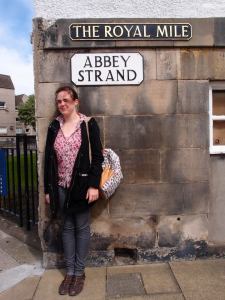
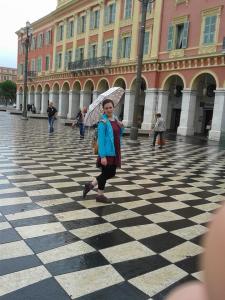
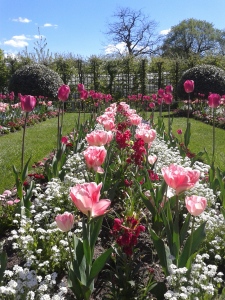

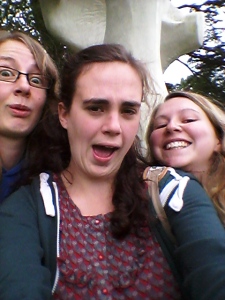
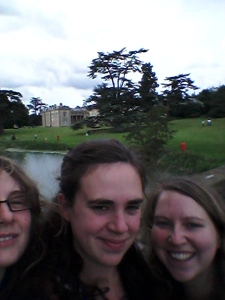
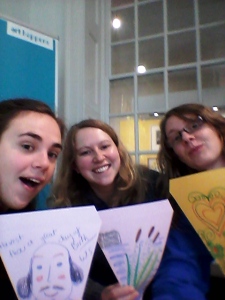
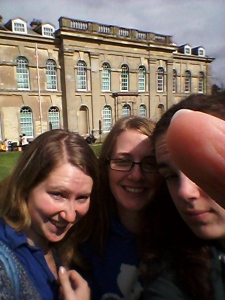



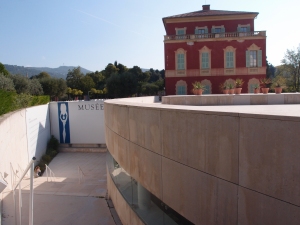


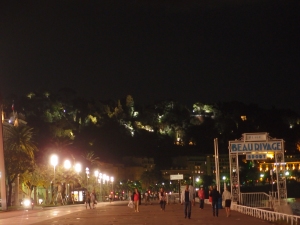
Louis, Louis and Louis
Posted on
We are friends, aren’t we? I can tell you things without judgment? Yes? Are you sure?
I ask because I have something I would like to admit, a weakness, and an embarrassing lapse – my knowledge of French royalty is well below par. Yes, I know, not the crime of the century but current TV programmes are really testing my history know how.
I am talking, of course, about the new historical drama, Versailles. A grand production that almost makes me forget my own experience visiting there where the queue for tickets was 1 ½ hours, the Hall of Mirrors was crowded and you could ride around the gardens on golf carts.
The problem that the programme is causing is that, as well as bringing up such fun memories, I am getting very confused which Louis is which. How does it relates to the Louis that lost his head and married Marie Antoinette? Also what about the Louis that has been dramatized in The Musketeers, also currently on BBC? A drama that never tries to portray itself as based on real events, but there exists a historical and literary context nevertheless.
I have decided to help me overcome my problems and avoid spending the entire episodes on Wikipedia at the same time by making the cheat sheet below.
Charles I
Built Versailles
Sun King
Good Dancer
Oliver Cromwell
Charles II
James II
Mary II
William I
Anne I
George I
Husband of Marie Antoinette
Executed during the French Revolution
Fingers crossed I think that’s all correct and I am not going to even try to get my head around the first 12 Louises (whatever the plural of Louis is).
Bonsoir,
Angharad x
Another memento from my trip to Versailles a couple of years ago.
This entry was posted in Comment, General, Views.